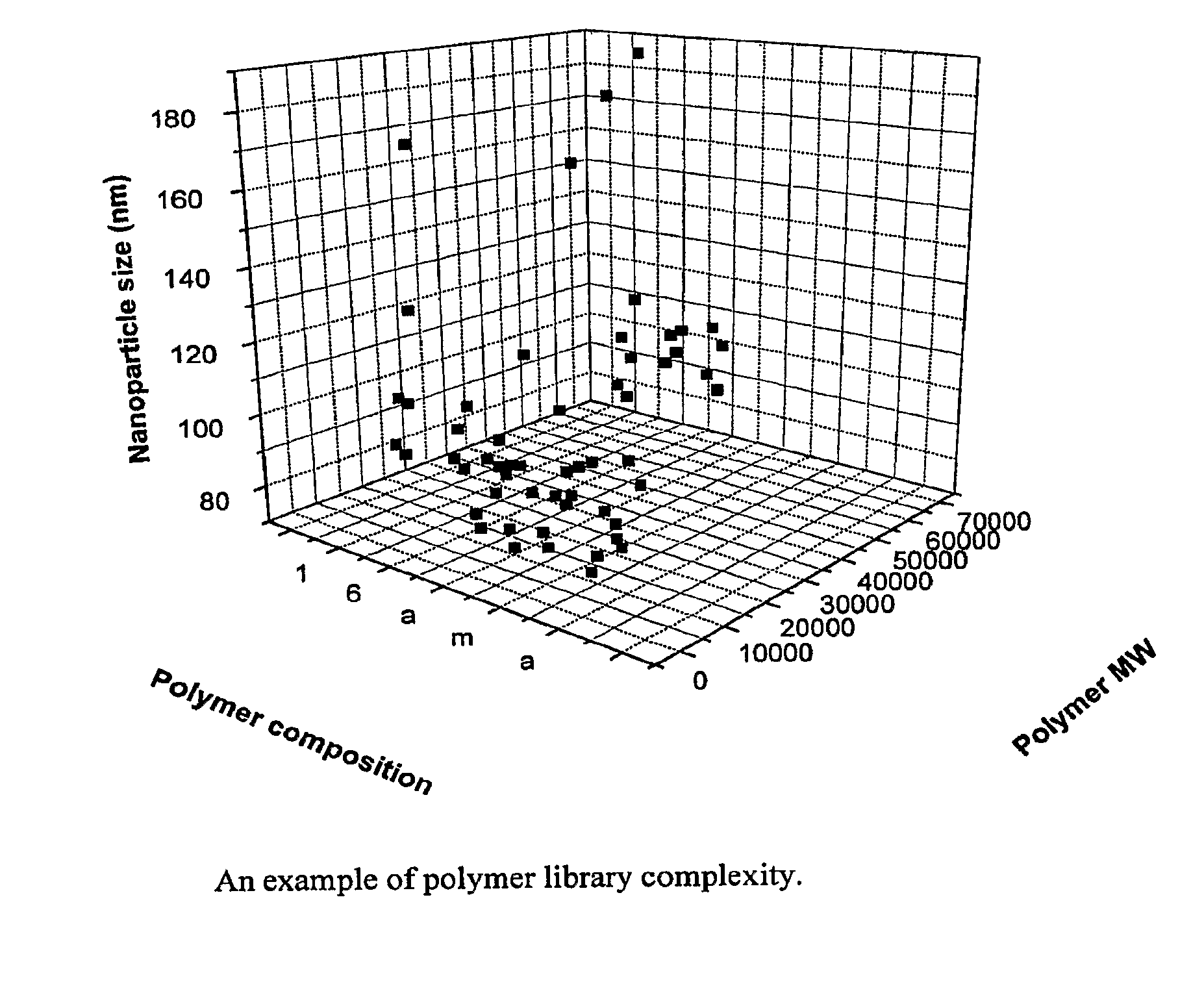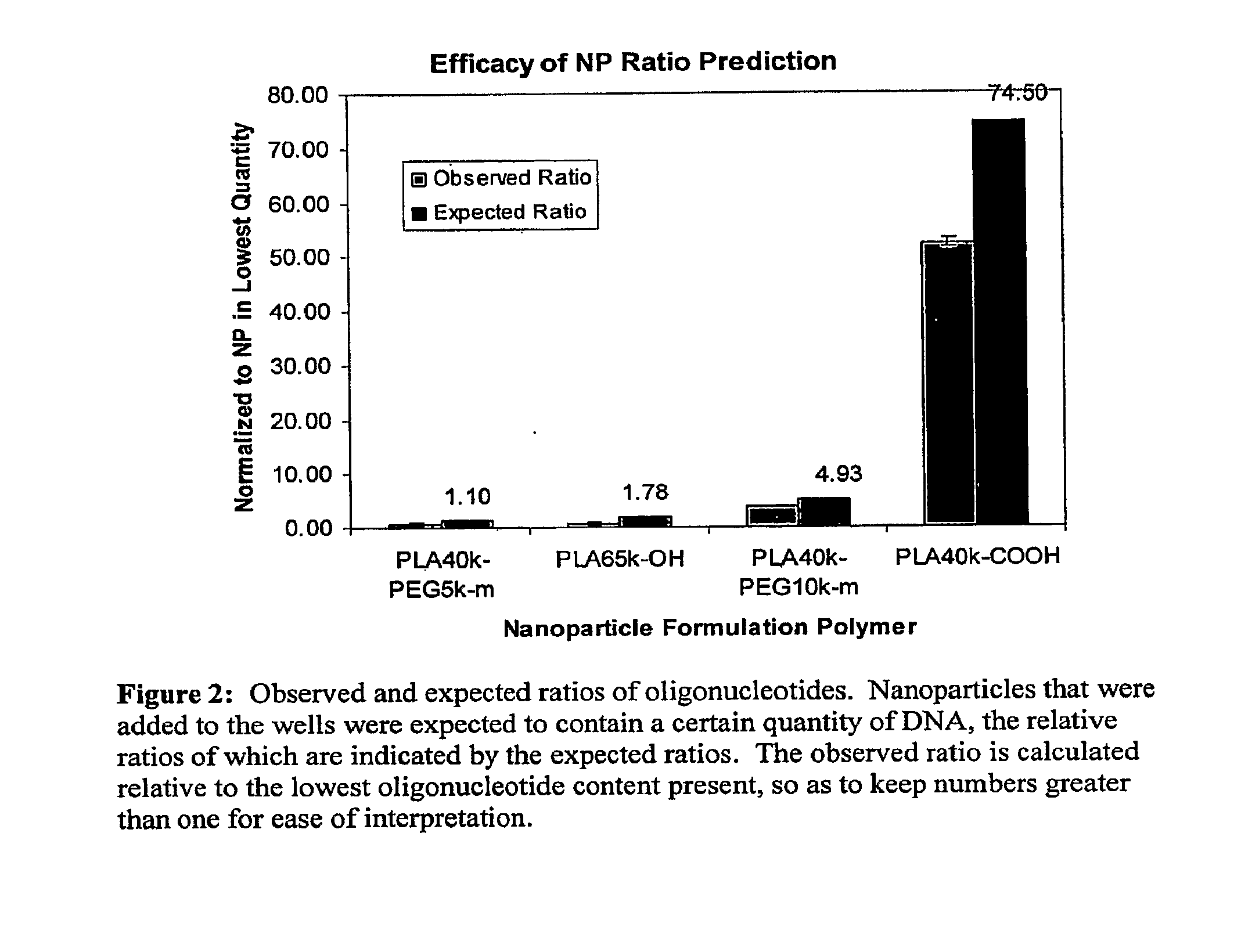System for Screening Particles
a particle identification and particle technology, applied in the field of in vitro and in vivo systems for identifying particles, can solve the problems of inability to recapitulate vitro evaluations, many potential useful targets, and several limitations of the approach
- Summary
- Abstract
- Description
- Claims
- Application Information
AI Technical Summary
Benefits of technology
Problems solved by technology
Method used
Image
Examples
example
“DNA Barcodes” in High Throughput Screening of Nanoparticles for Desirable Characteristics
[0076]A procedure was developed to screen different nanoparticle formulations for desirable characteristics in parallel using cultured cells in vitro. This procedure is based on tagging distinct nanoparticle formulations with unique segments of DNA (i.e., “DNA barcodes”), thereby allowing one to quantitatively trace the amount of each particle type present in a cell or tissue, for example. Nanoparticles were incubated at chosen conditions, purified, dissolved by incubation in a mildly basic (0.01 N NaOH) solution (12 hr, room temperature), and assayed directly for DNA content by multiplex assay using Luminex beads (published U.S. Patent Application 2006 / 0177850, published Aug. 10, 2006; which is incorporated herein by reference) conjugated with the appropriate complementary DNA sequences, all using a Bioplex platform (published U.S. Patent Application 2005 / 0123455, published Jun. 9, 2005; which...
PUM
| Property | Measurement | Unit |
|---|---|---|
| Size | aaaaa | aaaaa |
| Density | aaaaa | aaaaa |
| Semiconductor properties | aaaaa | aaaaa |
Abstract
Description
Claims
Application Information
 Login to View More
Login to View More - R&D
- Intellectual Property
- Life Sciences
- Materials
- Tech Scout
- Unparalleled Data Quality
- Higher Quality Content
- 60% Fewer Hallucinations
Browse by: Latest US Patents, China's latest patents, Technical Efficacy Thesaurus, Application Domain, Technology Topic, Popular Technical Reports.
© 2025 PatSnap. All rights reserved.Legal|Privacy policy|Modern Slavery Act Transparency Statement|Sitemap|About US| Contact US: help@patsnap.com



